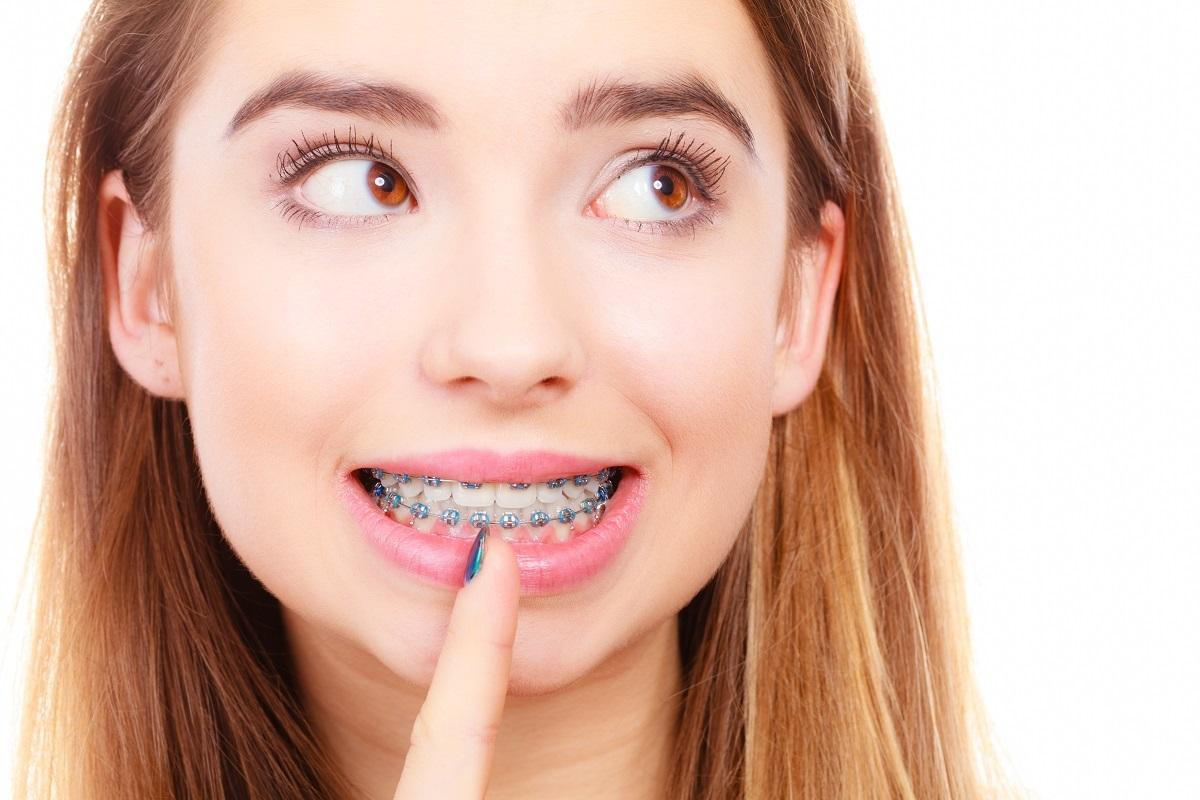
Teeth whitening has increased in popularity over the last decade. We see celebrities flashing their iridescent smiles on social media all the time. For many patients, after their braces are removed, they want to achieve the same Hollywood look!
You’ve gone through all that hard work and want to show off your beautiful new smile, so what’s the safest and best way to get whiter teeth after your braces are removed?
Methods of Teeth Whitening
There are several methods to whiten your teeth after braces. You should always discuss with your orthodontist, dentist or oral hygienist which is best suited for you!
Teeth whitening products and services are basically categorized by either at home or in-chair.
For some people a whitening toothpaste bought at the supermarket is all they need to slightly brighten the color of their teeth. Others may try whitening trays purchased from the orthodontic or dental practice.
Once you have your braces off and you’re keen to have your teeth whitened, we recommend you make an appointment to discuss your options, always make sure that the dental professional advise if you are ready - using a teeth whitening product any sooner than needed can aggravate the gums, and also contribute to sensitivity.
After discussing with your orthodontist or dentist what color is achievable with the whitening treatment, they can possibly give you some recommendations.
Treatment (In-chair)
If you’re hoping to whiten your teeth by significantly, in office whitening may be your only option. Dental professionals can use more powerful methods than any at-home treatment to deliver a whiter result. This is because it is in a supervised environment and they are specifically trained to administer the product.
At-Home Treatment (purchased from the practice)
This method is usually more time consuming and would require dedication. There are many different dental acclaimed product - the practice will decide which is best for you. They will also instruct you on the hours per day and the amount of days you would require to apply or have the product on the teeth. It may be a slightly less dramatic effect than can be achieved in-chair, but may be what you’re looking for, and also more cost effective than an in-chair treatment.
What Causes Teeth Discoloration?
Teeth can discolor for a variety of reasons, such as poor oral hygiene, eating stain-causing food and drinks, tobacco and certain medications. There are two types of teeth discoloration - extrinsic and intrinsic.
Extrinsic Discoloration
Extrinsic discoloration are stains that affect the outside of the teeth. The stains are caused by poor oral hygiene, food, beverages and smoking.
Stained Teeth from Braces
People with braces who look after their teeth by brushing and flossing after meals and snacks, won’t experience any staining. But some people have small white squares where the brackets were glued to their teeth. The remaining surfaces of their teeth were unprotected from food and drinks high in sugar or color. A lack of proper brushing, flossing and visits to the dentists have left their teeth stained.
Teeth whitening can help even out the difference in color so the stains are less noticeable or even disappear.
Food and Beverage Stains
Some foods and drinks are worse than others for leaving our teeth stained. Sugary drinks and foods cause a build-up of plaque which can cause stains and decay.
Tea and coffee contain tannins which can stain teeth. Red wine drinkers are also at risk of stained teeth.
Even healthy foods such as fruits and vegetables can cause havoc with our teeth. The high acid content can cause the enamel to weaken over time making the teeth more vulnerable to staining. If you drink lemon water, use a straw so most of the liquid by-passes your teeth. Drink it fairly quickly rather than sipping on it all morning, so you don’t bathe your teeth in acid.
Smoking
By far the worst thing you can do for teeth (and your health) is to smoke. Nicotine stains buildup on teeth and no amount of brushing or dentist visits can remove them. Teeth whitening is the only way to disguise some of the stains on smokers’ teeth.
Intrinsic Discoloration
Intrinsic discoloration occurs from within the tooth. The reasons for the discoloration can include medications, a childhood illness, trauma to a tooth and aging. Some people naturally have more yellow teeth than the average person.
Intrinsic discoloration is more difficult to treat than extrinsic discoloration. At-home products are less likely to be effective in whitening teeth and may need professional treatment to gain a positive result.
Are There Any Side Effects to Teeth Whitening?
Teeth whitening is considered safe, but you may experience some side effects from your treatment.
Sensitive Teeth & Gums
Some people report sensitive teeth and/or gums during and after teeth whitening treatments. It’s caused by exposure of the dentin layer during whitening. If you’ve ever experienced sensitive teeth or gums while eating, brushing or during previous whitening treatments, mention it to your dental professional, there might be a whitening method that’s better suited to you.
Irritation of Gums
Soft tissue irritation can occur when the whitening solution comes in contact with the gum tissue during some methods. This causes your gums to appear white and cause pain. The gum tissue should be protected at all times, from any exposure to highly concentrated hydrogen peroxide or carbamide peroxide. In most cases, the pain and whiteness disappears soon after but prolonged exposure to these solutions can cause inflammation to the gums.
Disappointing Results
Depending on the initial color and condition of your teeth your results could be undesirable. You might expect your teeth to be whiter after the treatment. To ensure you aren’t disappointed, discuss your likely outcome from treatment. Heavy staining or naturally yellow teeth can be difficult to whiten. Each person is different and may experience different results, but it is definitely worth a try if you are looking for a whiter, brighter smile after braces!
